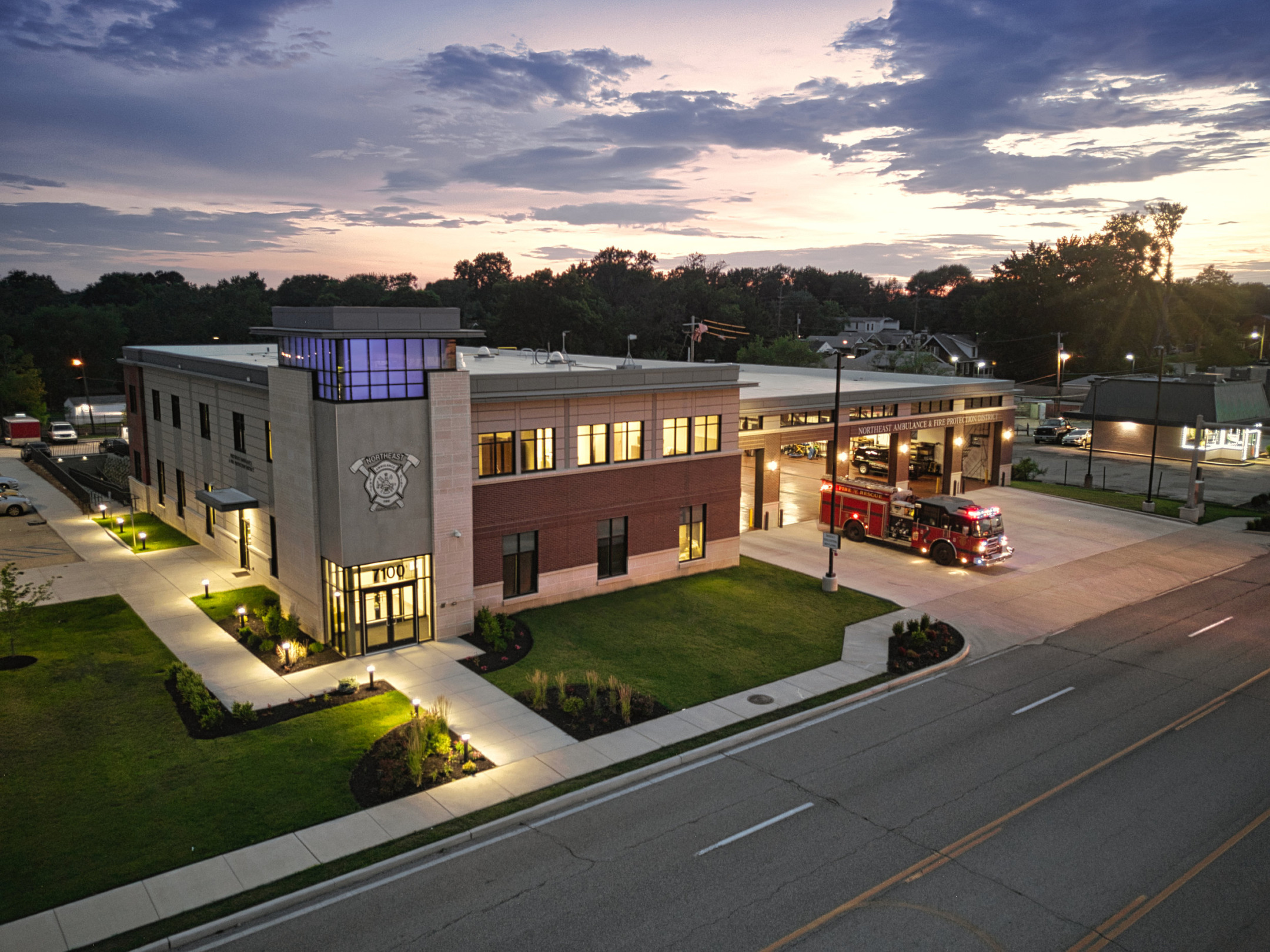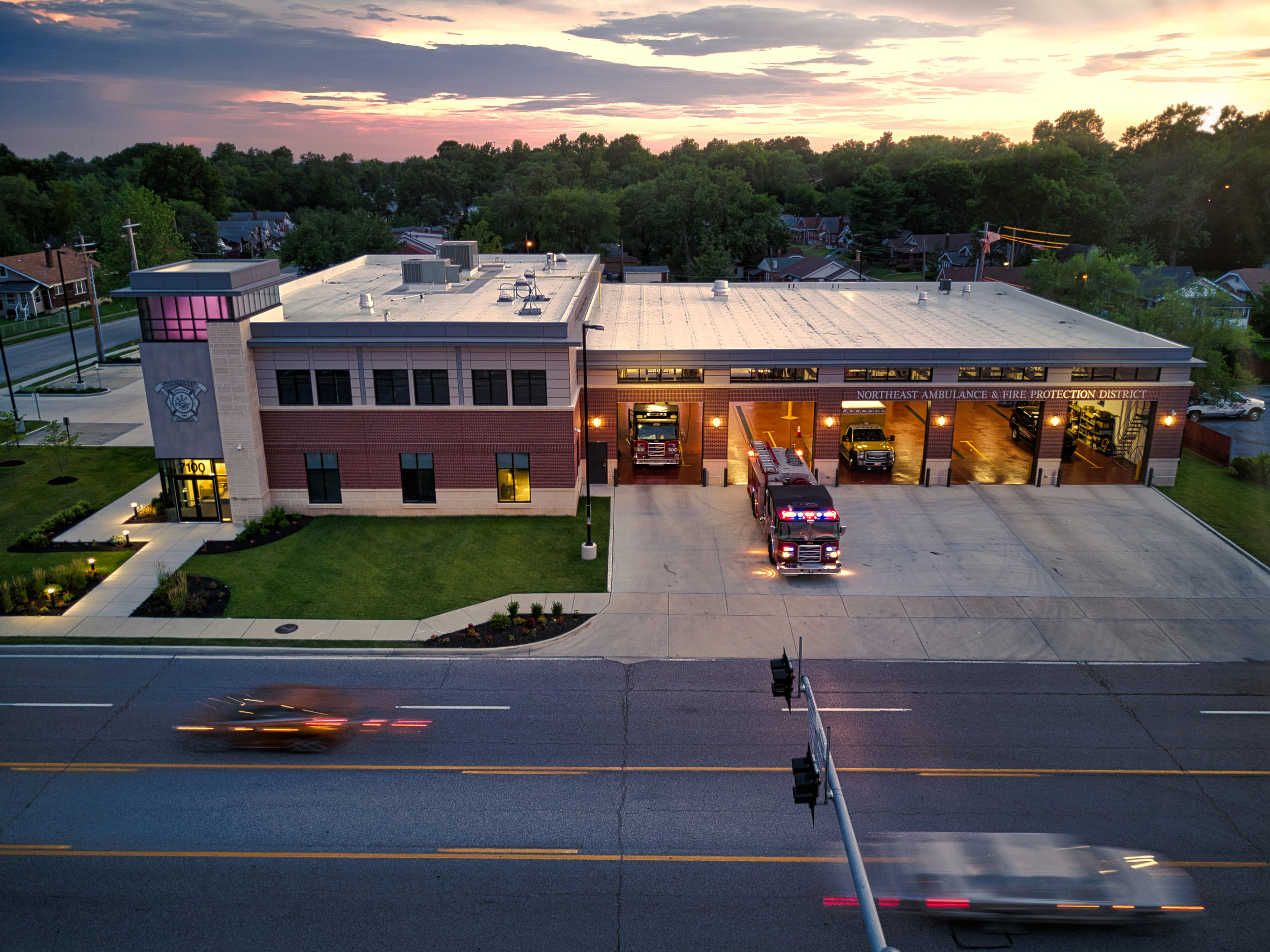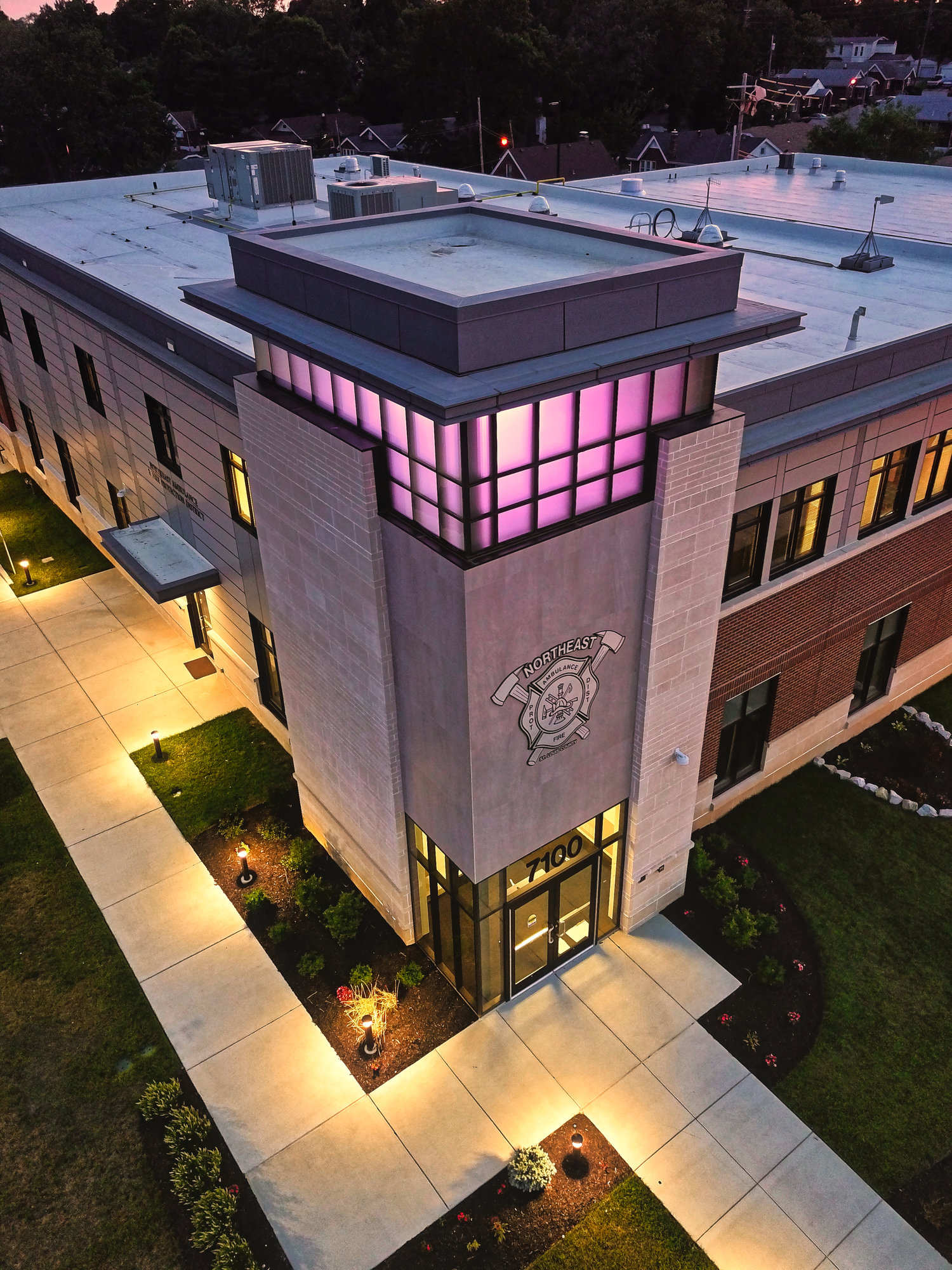
IS YOUR MISSION CRITICAL?
JEMA’s new fire station for Northeast Ambulance & Fire Protection District is one of the largest fire stations in the bi-state region at 32,000 sq. ft. It has a lower level, a main level, a second level and a mezzanine level. It has 5 apparatus bays (double-deep). It also has 12 individual bunk rooms, two fire poles and a kitchen that would make Rene Redzepi jealous. There is a Storm Shelter for the community on the lower level. If that is not enough, it even has a community room with a separate entrance for the community.
The new fire station is one of busiest in the area serving 17 municipalities, 45,000 residents and making approximately 5,000 calls per year.
But there is one metric in this fire station that you can’t even see…but its the most critical. It is called the “Importance Factor”.

The importance factor originated in the Uniform Building Code of 1976. The concept at that time was that the importance factor increased the design seismic forces in order to provide additional seismic resistance to prevent catastrophic collapse. The 1976 UBC assigned essential facilities an importance factor of 1.5 and assembly occupancies an importance factor of 1.25.
Another way to look at it, importance factors greater than 1.0 have the effect of reducing the inelastic behavior of a building, which in turn reduces the potential for damage. Over time, the importance factor made its way into snow and wind load design as well.

Essential facilities are classified as Category IV buildings; these buildings include fire, rescue, ambulance, police stations, emergency shelters and hospitals and other health care facilities where surgery and/or emergency treatment is available. Basically, all buildings critical for emergencies, natural disasters and protection are classified as Category IV.
Although you can’t see it from a casual inspection or visit, essential facilities are different from every other building. Indeed they are essential and critical and therefore, more “important”.
